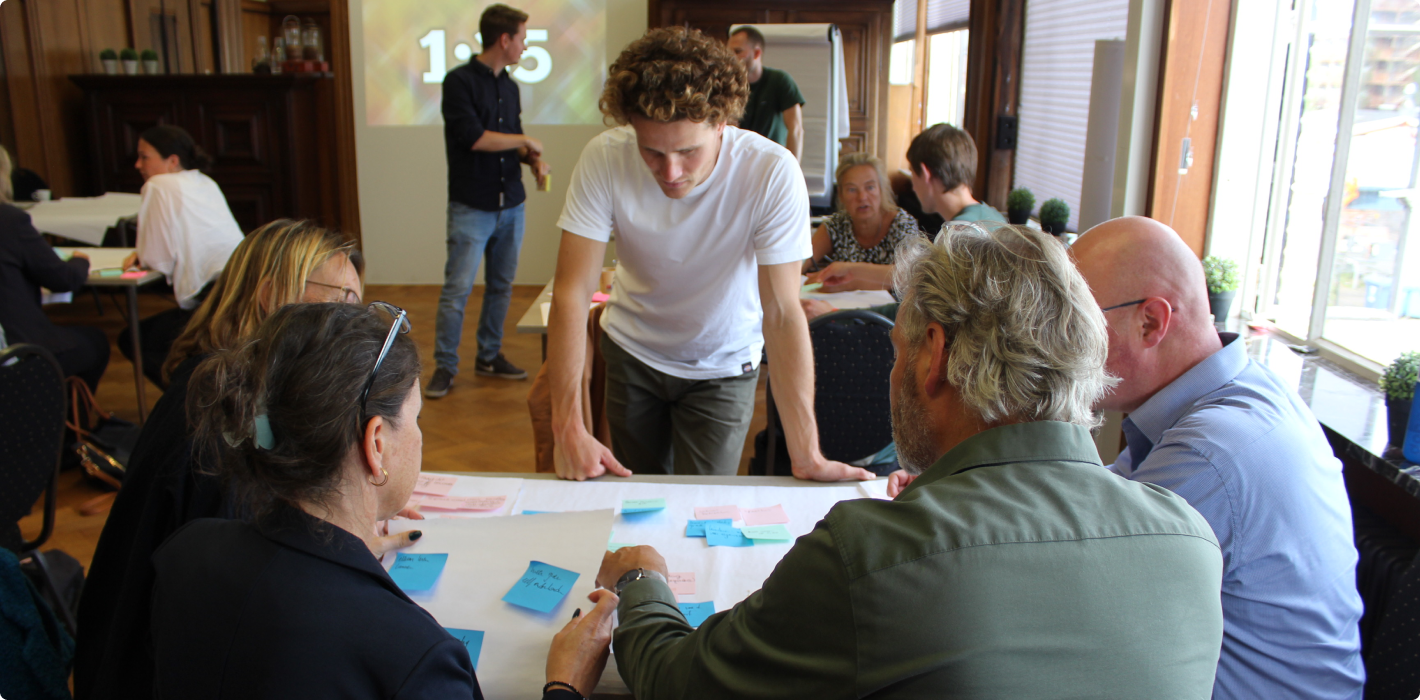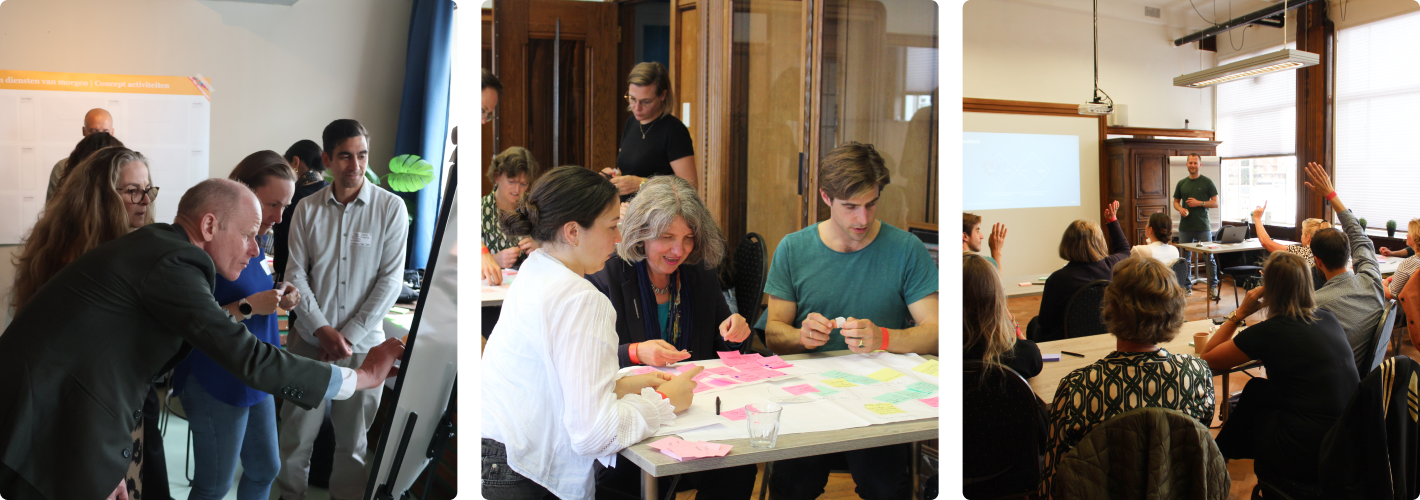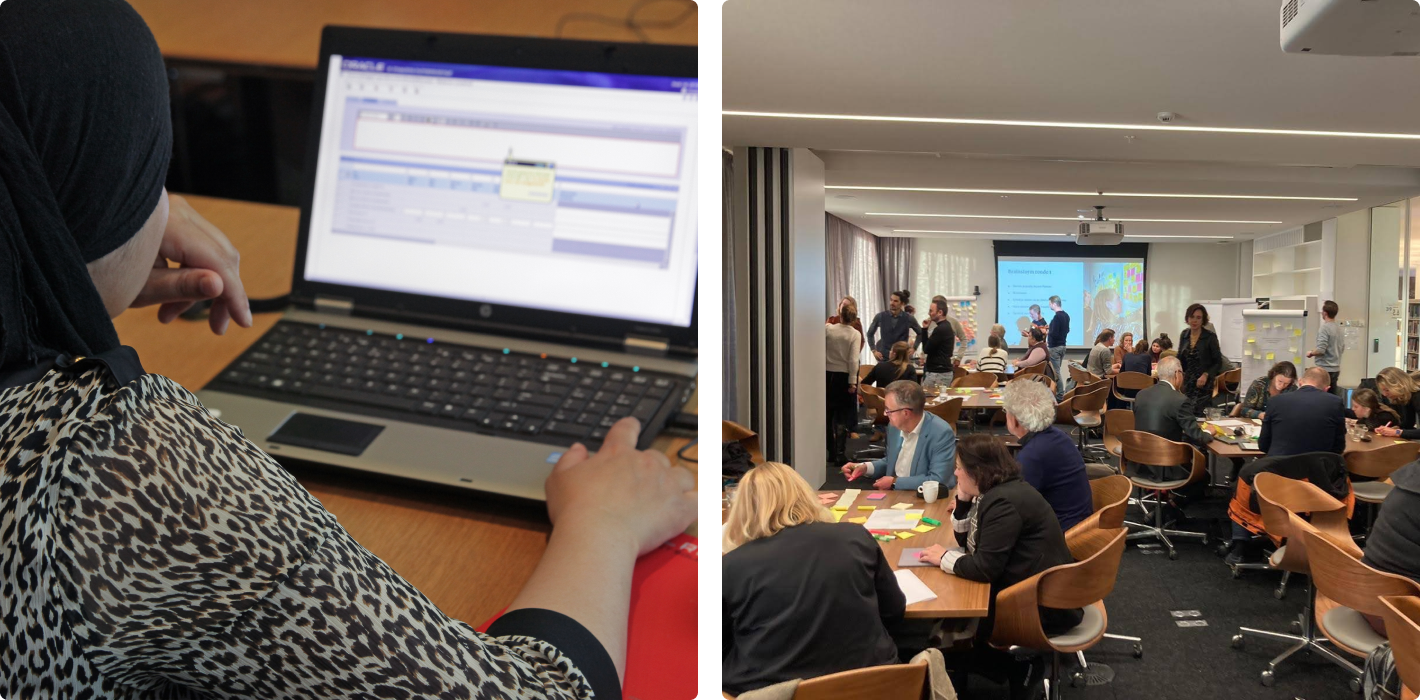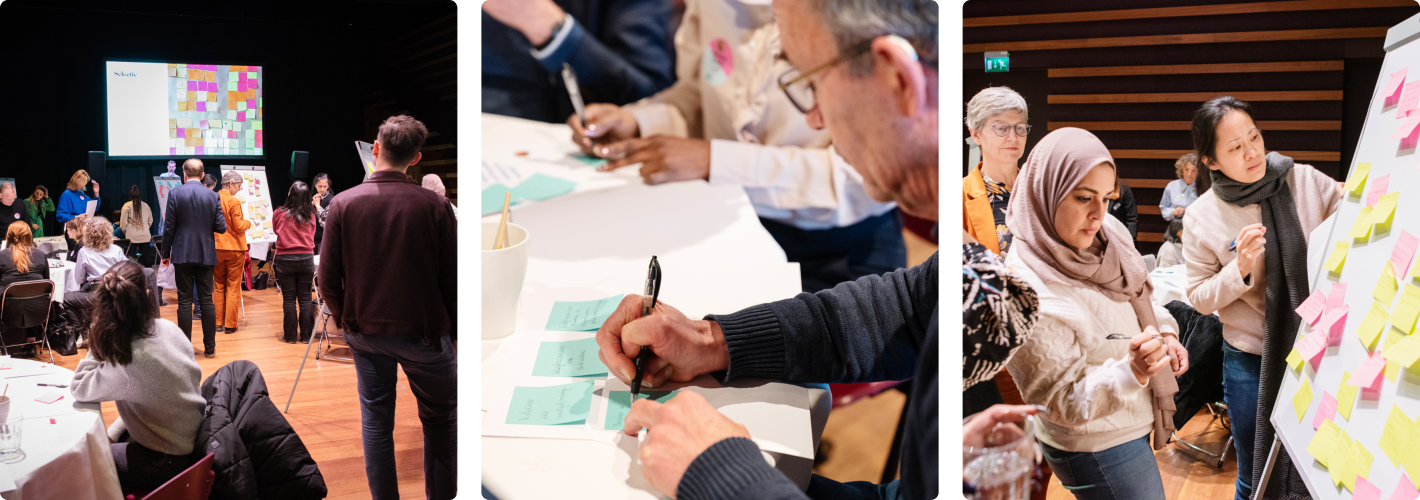Client
City of Amsterdam
Challenge
Integrate a human-centered design approach across the municipality's operations and channels to improve a user friendly service delivery, inclusivity and accessibility.
Impact
A long-term partnership that empowered governmental employees, leading to a co-creative culture and tangible, user-centered solutions for the city and its citizens.
Challenge
Fostering human-centered innovation
The City of Amsterdam, a large, multifaceted organisation, faced the challenge of integrating a user-oriented design approach. While dedicated to making its digital channels more inclusive and accessible, the municipality gained a strategic partner to help foster this mindset. The goal was to move beyond one-off projects and embed a sustainable, co-creative culture that would empower employees to solve complex challenges from the inside out, rather than relying solely on external support.

Working with Koos has been a true pleasure. They manage to make complex social challenges feel simple and approachable. With their sharp thinking, pragmatic mindset, and energetic way of working, we developed concrete solutions that are broadly supported and are now being put into practice.
Outcome
A strategic partnership for the municipality
Our partnership with the City of Amsterdam is built on a multi-faceted approach, combining different elements to create a holistic and lasting impact. We act as strategic partners, combining project-based collaborations with tailored training programs and workshops. From applying the double diamond design approach to daily work to establishing new processes for involving stakeholders and end-users, this collaboration has ensured solutions are not only effective for today but are also adaptable to the evolving needs of businesses, citizens and professionals.
This collaboration model enabled the City of Amsterdam and over 100 employees to implement a deep, organisation-wide commitment to human-centered design.
Partnership elements
Training programs to cultivate internal expertise
We collaborated with the ‘Amsterdamse School,’ the city’s training department, to develop a tailored training program. This program was co-designed to integrate the municipality’s needs and optimise its success, empowering employees with the knowledge and practical skills to apply the design approach to their work.
The program includes:
- A two-day masterclass described as a “pressure cooker,” which introduces participants to all the core elements of our Koos approach. The value lies in the focus on the practice, with participants deep-diving into each one of the ‘double diamond’ phases, applying the methods themselves. Such as selecting a real case that occurs within the municipality, and interviewing the target group themselves.
- Next, they work on their own cases in groups for over two months, with guidance from our trainers. Every 2-3 weeks, we conduct in-depth training days to dive deeper into each phase and focus on the progress of the cases at hand.
- These collaborative moments allow participants to learn from each other’s successes and challenges when applying the different methods.
This hands-on process ensures the working method “sticks” and becomes a part of their professional toolkit. Over 150 employees have already participated, fostering a growing community of internal design leaders.

Project-based collaborations for tangible solutions
In addition to training, we engage in specific, project-based collaborations with various departments. These projects, which typically last two to eight months, allow us to delve into a specific topic, conduct detailed research, and develop solutions for implementation.
Our process includes:
- Research: The core is to create empathy with the user, so research is conducted with the end-user of a service. This could be citizens, teachers, healthcare professionals, entrepreneurs, etc.
- Analysis: Data from the research is analysed and reduced to manageable insights, often using a “model” to communicate the findings clearly. This makes the transition to finding solutions smoother.
- Ideation: During this phase, co-creative solutions are developed based on the insights found. Involving a multidisciplinary group helps generate out-of-the-box solutions that might not have arisen otherwise.
- Stakeholder buy-in: It is crucial to involve stakeholders throughout the entire project. By including them in every step, such as co-creative sessions, they feel a sense of ownership over the final solution.
Project examples:
- Combating teacher shortage: We helped the municipality develop human-centered policies to address a growing teacher shortage. Our collaboration resulted in new policy measures that improved the entire teacher experience, from recruitment to career development.
- Creating inclusive digital services: We focused on creating guiding design principles for the development of inclusive digital services for all citizens. These function as a compass to design inclusive services today and in the future

Workshops to foster co-creation and ownership
Not every collaboration needs to be long-term to be impactful. We organise several working sessions with different municipal teams to achieve important objectives like connection, support, participation and ownership. These sessions bring together key stakeholders from various fields, domains and subjects to create understanding, alignment and valuable collaborations.
- Sessions can differ in the number and background of participants, ranging from 8-100+, from different roles to achieve optimal impact
- Sessions’ structures and objectives are tailored to the assignment at hand
- By using co-creative brainstorming techniques, we help participants feel like true owners of the solutions they devise, which counteracts the “not-invented-here syndrome”.
- Sessions also encourage a multidisciplinary and visual approach to facilitate important discussions and make ideas concrete.

Inspirational gatherings to spread the mindset organisation-wide
To broaden the reach of the design approach and its positive impact, we organise inspirational gatherings as a tool for colleagues who may not immediately apply it in their roles.
These sessions, often lasting about an hour and organised within different departments and during events (for example, the “PMB Vakdag”), introduce employees to the subject through:
- Practical examples of relevant results and hands-on exercises, such as a quick interview with your colleague to uncover underlying latent needs, doing a mini brainstorm, or quickly making a prototype and testing it.
- Participants learn about the value of the design approach and its application, making it accessible and engaging for a wider audience.
- These elements help create support and activation for the topics discussed and devised solutions throughout the organisation.
Next steps
Building on a foundation of lasting impact
This partnership laid the groundwork for continuous innovation within the City of Amsterdam.
- The established training program continues to create a growing internal community of design thinkers.
- The co-creative approach has become a model for future projects, promoting cross-departmental collaboration.
- The focus on user empathy ensures that all new services and solutions will be instinctively human-centered and resilient.


